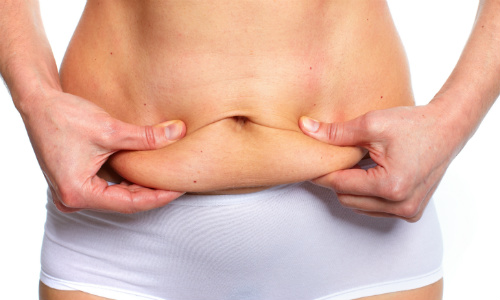Post-pregnancy tummy tuck risks and benefits
- Overview
- Full article
- Related articles
However, sometimes you may be left with a sagging or bulging stomach that no amount of sit-ups can help.
This may be why some women start to investigate the possibility of a tummy tuck, or abdominoplasty, or a mini-tummy tuck.

Mr Marc Pacifico, Consultant Plastic Surgeon at Nuffield Health Tunbridge Wells, explains: "After pregnancy, especially if you’ve had a large baby or twins, you may be left with stretched skin that cannot retract, and your abdominal muscles have separated in the middle, which is called a 'divarication'.
"This causes the tummy to bulge outwards, even in someone who is otherwise slim and fit". He says, "Pilates helps some women improve their divarication. However, there is no exercise or non-surgical treatment that can improve permanently stretched, excess skin."
A tummy tuck works to tighten the muscles that support the tummy, and at the same time excess skin can be removed. If only a relatively small amount of skin needs to be tightened, this is called a 'mini tummy tuck'.
During pregnancy, some women develop a small hernia that turns an 'innie' tummy button into an 'outie'. This is not a medical problem, but if it bothers you it can be fixed as part of a full tummy tuck.
Marc adds, "If there is some excess fat in the area, liposuction can be performed as part of the procedure".
However, a tummy tuck is a major operation and shouldn’t be rushed into.
"I ask women to wait at least six months and ideally a year to allow the skin and muscles to recover from childbirth," Marc says.
A tummy tuck is a serious operation. Risks include infection, poor wound healing, numbness to the area, scarring, and bleeding. This makes it vital to seek out a properly qualified and experienced surgeon who can minimise risks and treat any complications.
Six things to do before an abdominoplasty (tummy tuck)
- Stop smoking. Nicotine shuts down blood vessels which are vital for tissue repair, making rates of infection and poor wound healing unacceptably high. You shouldn’t use nicotine replacement either.
- Ensure you have child care. You will experience discomfort for two to three weeks after your operation, and you won’t be able to lift anything heavy for six weeks, including a baby or child. Walking may be tricky for one or two weeks, and you should avoid any vigorous exercise for around six weeks.
- Complete your family. It’s not dangerous to have a baby after a tummy tuck, but all your surgeon’s work could be undone by another pregnancy.
- Be prepared for scarring. The scar from a mini-tummy tuck, while low, is still larger than a caesarean scar. A full tummy tuck scar runs from hipbone to hipbone.
- Ensure you are at a stable weight you can maintain.
- Be realistic. A tummy tuck is not for anyone very overweight. If fat is inside your abdomen surgery won’t help, and you should opt for a sensible diet and exercise instead. It’s sometimes hard to tell if this is the case, so you need to be assessed by an expert surgeon.
Last updated Friday 3 November 2017
First published on Thursday 20 August 2015
